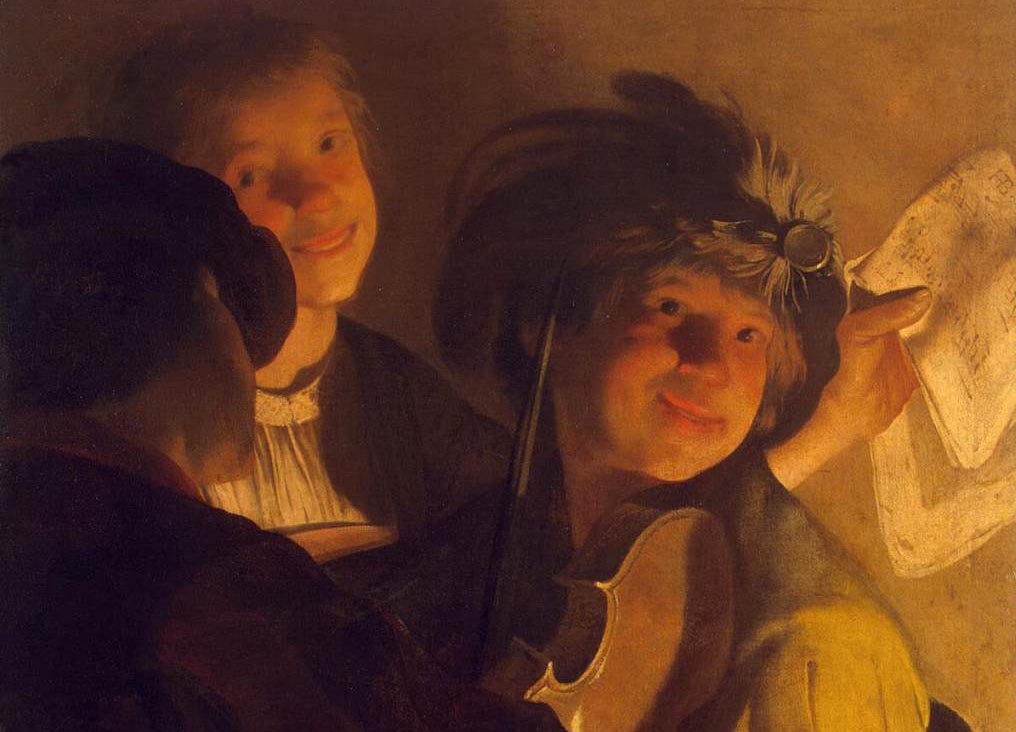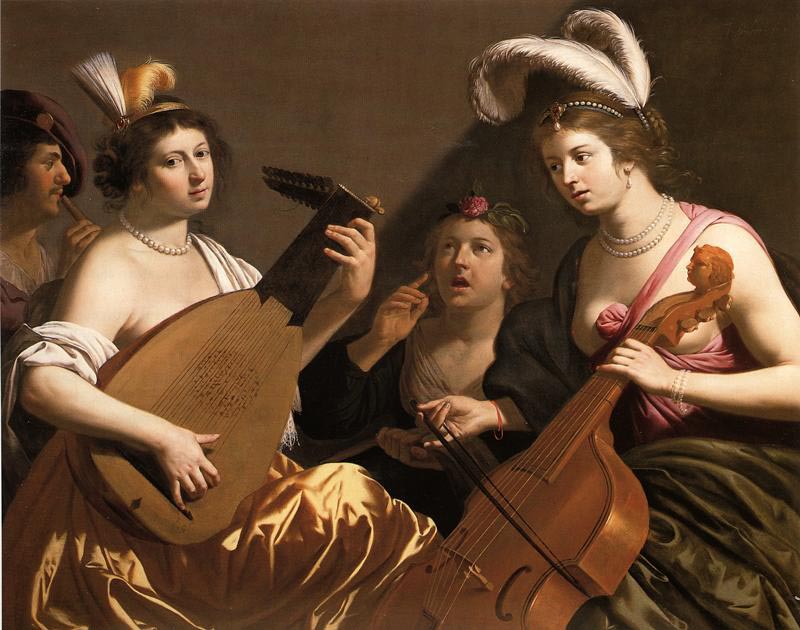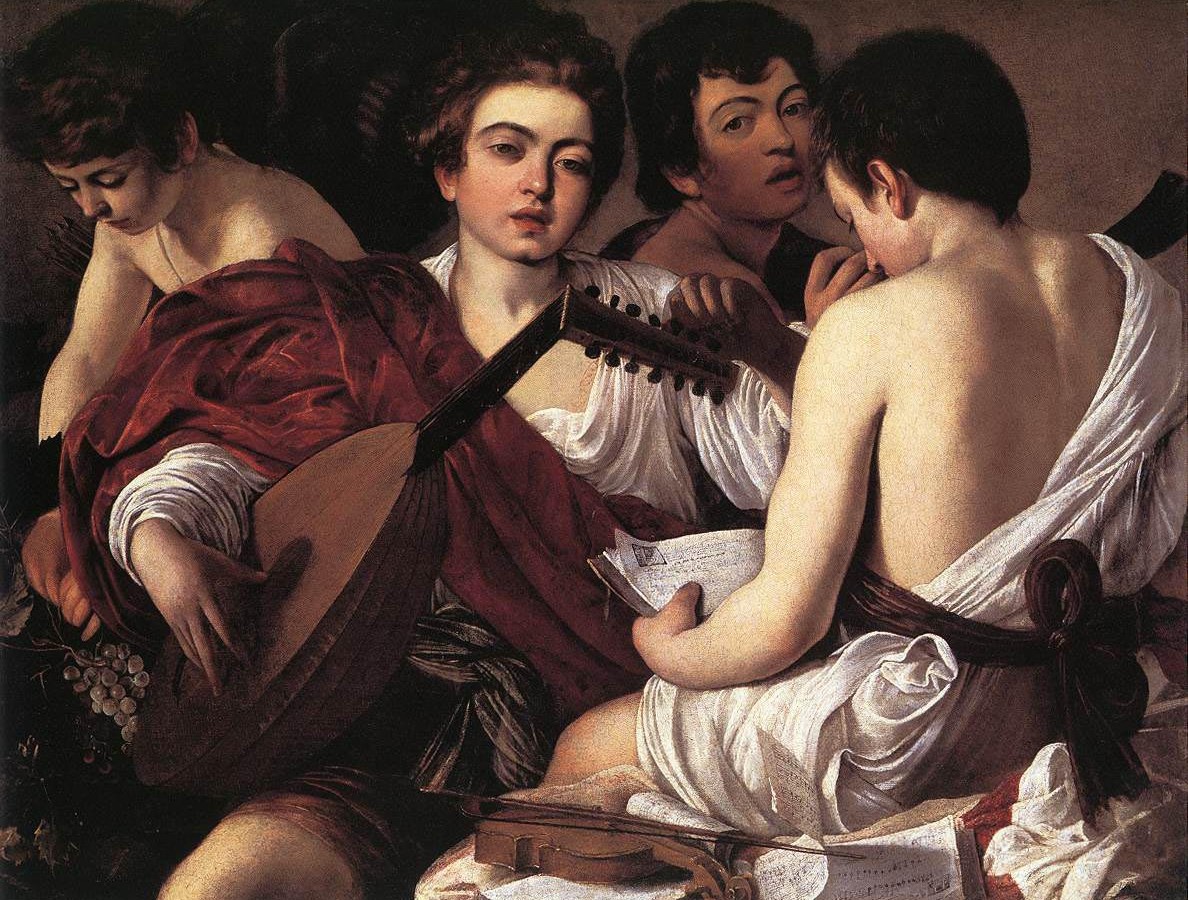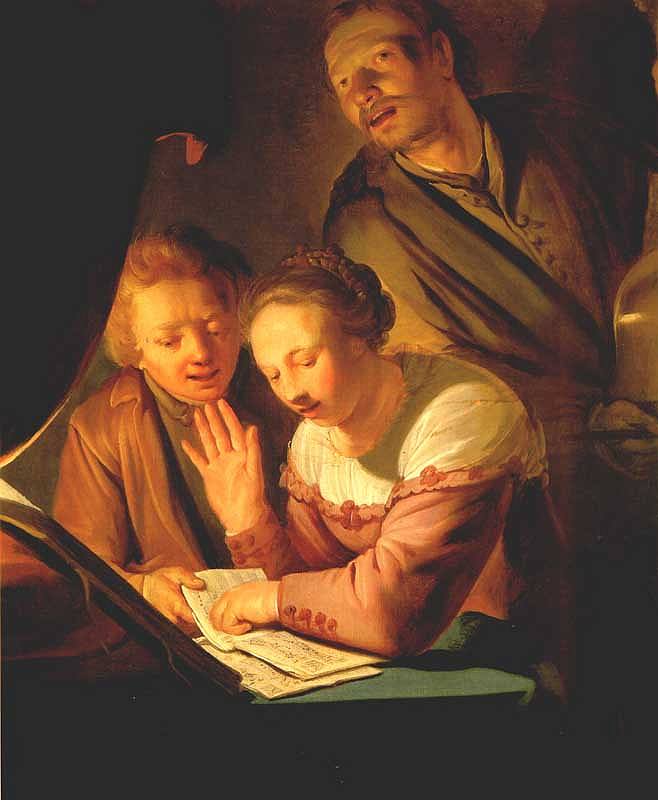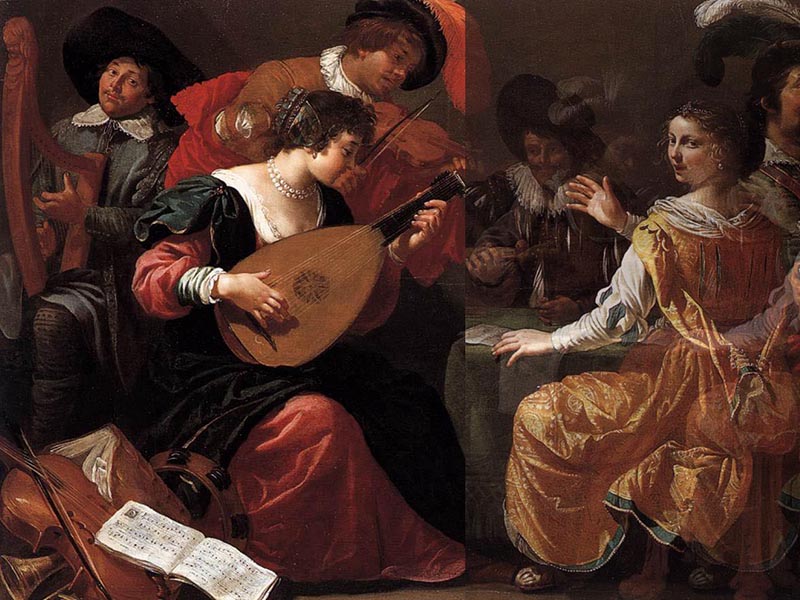Christel Boiron
cantus
Lucien Kandel
Xavier Olagne
contratenors
Thierry Peteau
tenor
Guillaume Olry
bassus
Marie Bournisien
triple-harp
Composed of Italian madrigals from the end of the Renaissance era, this musical course invites an appreciation of words and of musical texture.
Polyphonists hailing from Northern France and Flanders, such as Cyprien de Rore and Roland de Lassus, become acquainted with Petrarchan language and the then new musical form of the madrigal, which came into being at the end of the fifteenth century. In the madrigal, the learned art of counterpoint blends with language, the richness of which carries a wealth of expressions and rhetorical devices that are essential for writing in this dramatic tone. These sixteenth century writers successfully adapted to music the Canzoniere sonnets by Petrarch in the madrigal form (which were written two centuries earlier).
The colourful range of music that developed in around 1550 tends to reinforce this form of expression. Roland de Lassus wrote the celebrated Prophéties des Sybilles, an entirely chromatic work. Gesualdo, in his madrigals, takes this technique of writing to its highest degree.
At the turn of the seventeenth century, the madrigal, despite its intense and expressive function, was gradually replaced by the new style of instrumentally accompanied monody. This seconda prattica was born of the profound desire of composers to heighten the significance of the words above that of the music.
This transformation takes place when the number of musical instruments increases. The instruments simultaneously parody and adorn the voice in this way, much like in this new version of the madrigal Ancidetemi pur, played on the harp.
A polyphonic instrument, such as the harpsichord, lute, theorbo, harp, or a combination of several instruments, henceforth insures harmonic, multi-tonal support. Consequentially, the voice becomes a soloist.

